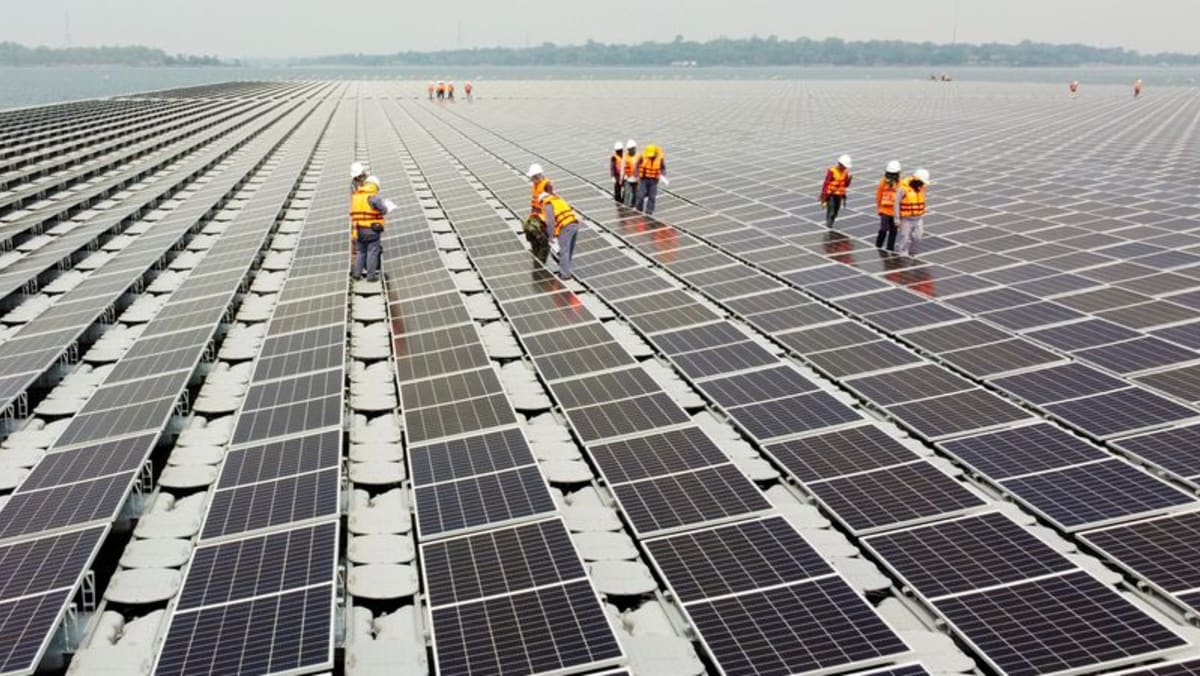US Solar Panel Tariffs Boost Hanwha And OCI's Growth Prospects

Table of Contents
Hanwha's Strategic Advantage in the Face of US Solar Panel Tariffs
Hanwha, a South Korean conglomerate with a substantial presence in the renewable energy sector, finds itself strategically advantaged by the US solar panel tariffs. This advantage stems from several key factors.
Domestic Manufacturing Capabilities
Hanwha's significant manufacturing presence in the US allows it to bypass or mitigate the impact of tariffs.
- Hanwha Q CELLS, a major Hanwha subsidiary, operates large-scale solar cell and module manufacturing facilities in Georgia and other US locations.
- These facilities boast a combined production capacity exceeding several gigawatts annually, significantly contributing to the domestic supply of solar panels.
- Recent investments in these US-based manufacturing plants demonstrate Hanwha's commitment to expanding its domestic production capacity and further solidifying its position in the tariff-adjusted market.
Diversified Product Portfolio
Hanwha's competitive edge is further enhanced by its diversified portfolio of solar products, extending beyond just solar panels.
- Their offerings include high-efficiency solar panels, inverters, energy storage systems, and other related technologies.
- This diversification reduces reliance on specific tariff-affected components, providing a more stable and resilient business model.
- Strategic partnerships with other key players in the solar energy value chain further enhance Hanwha's market position and its ability to adapt to evolving market dynamics.
Increased Market Share and Revenue Projections
The increased demand for domestically produced solar panels, a direct consequence of the tariffs, is expected to translate into substantial growth for Hanwha.
- Financial reports and analyst predictions project significant increases in Hanwha's market share and revenue in the coming years.
- Several large-scale solar projects secured by Hanwha demonstrate the company's success in capitalizing on the tariff-induced shift in market demand.
- These wins showcase Hanwha's ability to leverage its domestic manufacturing capabilities and diversified product portfolio to secure lucrative contracts.
OCI's Polysilicon Dominance and its Contribution to the US Solar Industry
OCI, a global leader in polysilicon production, plays a crucial role in the US solar industry's supply chain. Its position as a major polysilicon producer provides a significant advantage in the current market environment.
Polysilicon Production and Supply Chain
Polysilicon, a critical raw material in solar panel manufacturing, is where OCI's strength lies.
- OCI's substantial polysilicon production capacity and global market share make it a vital player in the solar energy value chain.
- Their geographic diversification and strategic partnerships ensure a stable supply of polysilicon, even amidst global market fluctuations.
- This reliable supply chain resilience becomes even more valuable given the complexities and disruptions caused by the tariffs.
Reduced Reliance on Imports and Price Stability
OCI's domestic polysilicon production minimizes reliance on imported materials, reducing vulnerability to tariff fluctuations.
- Domestically produced polysilicon offers greater price stability compared to imported material, which is susceptible to tariff-induced price increases.
- OCI's commitment to expanding its domestic production capabilities further reinforces its resilience against external market shocks and strengthens the US solar manufacturing base.
- This contributes to greater price stability and cost-effectiveness for US solar panel manufacturers.
Synergies with Hanwha and other Solar Companies
The synergy between OCI and other solar companies, particularly Hanwha, strengthens the US solar supply chain.
- Potential and existing collaborations leverage their respective strengths to create a more efficient and integrated domestic solar manufacturing ecosystem.
- These partnerships facilitate the development of a more self-sufficient US solar industry, reducing dependence on foreign suppliers.
Long-Term Implications for the US Solar Energy Market and the Role of Hanwha and OCI
The growth of Hanwha and OCI, driven in part by the US solar panel tariffs, has significant long-term implications for the US solar energy market.
Increased Domestic Manufacturing and Job Creation
Hanwha and OCI's expansion in the US directly contributes to job creation and economic growth within the solar sector.
- Their investments in domestic manufacturing facilities generate numerous jobs, boosting local economies and fostering economic development.
- Government initiatives supporting domestic solar manufacturing further amplify these positive effects, creating a virtuous cycle of growth and employment.
Enhanced Energy Independence and Security
The growth of domestic solar manufacturers contributes significantly to US energy independence and security.
- Reduced reliance on foreign suppliers of solar components enhances the resilience of the US energy system, mitigating geopolitical risks.
- The environmental benefits are substantial, as increased domestic solar energy production reduces reliance on fossil fuels and lowers carbon emissions.
Challenges and Potential Risks
Despite the opportunities, several challenges and potential risks remain.
- Competition from other domestic and international solar companies remains a significant factor.
- Fluctuations in market demand and the price of raw materials can impact profitability.
- Future changes in government policy could also affect the long-term growth trajectory of the US solar industry.
Conclusion
The US solar panel tariffs, while creating short-term challenges, have demonstrably boosted the growth prospects of companies like Hanwha and OCI. Their strategic positioning, focusing on domestic manufacturing and supply chain integration, allows them to capitalize on the increased demand for American-made solar products. This ultimately contributes to a stronger, more resilient US solar energy sector. By understanding the significant impact of these tariffs on key players like Hanwha and OCI, investors and policymakers can better navigate the evolving landscape of the US solar panel market. Learn more about the impact of US solar panel tariffs and how it shapes the future of renewable energy.

Featured Posts
-
 The Reality Of Elon Musks Familys Financial Rise Maye Musks Insights
May 30, 2025
The Reality Of Elon Musks Familys Financial Rise Maye Musks Insights
May 30, 2025 -
 London Klub Melder Varm Interesse For Kasper Dolberg
May 30, 2025
London Klub Melder Varm Interesse For Kasper Dolberg
May 30, 2025 -
 2 37 23
May 30, 2025
2 37 23
May 30, 2025 -
 Gorillaz To Play First Three Albums Live In London One Off Shows Announced
May 30, 2025
Gorillaz To Play First Three Albums Live In London One Off Shows Announced
May 30, 2025 -
 Analyzing The Taco Trade Agreement Sources Of Trumps Ire
May 30, 2025
Analyzing The Taco Trade Agreement Sources Of Trumps Ire
May 30, 2025
